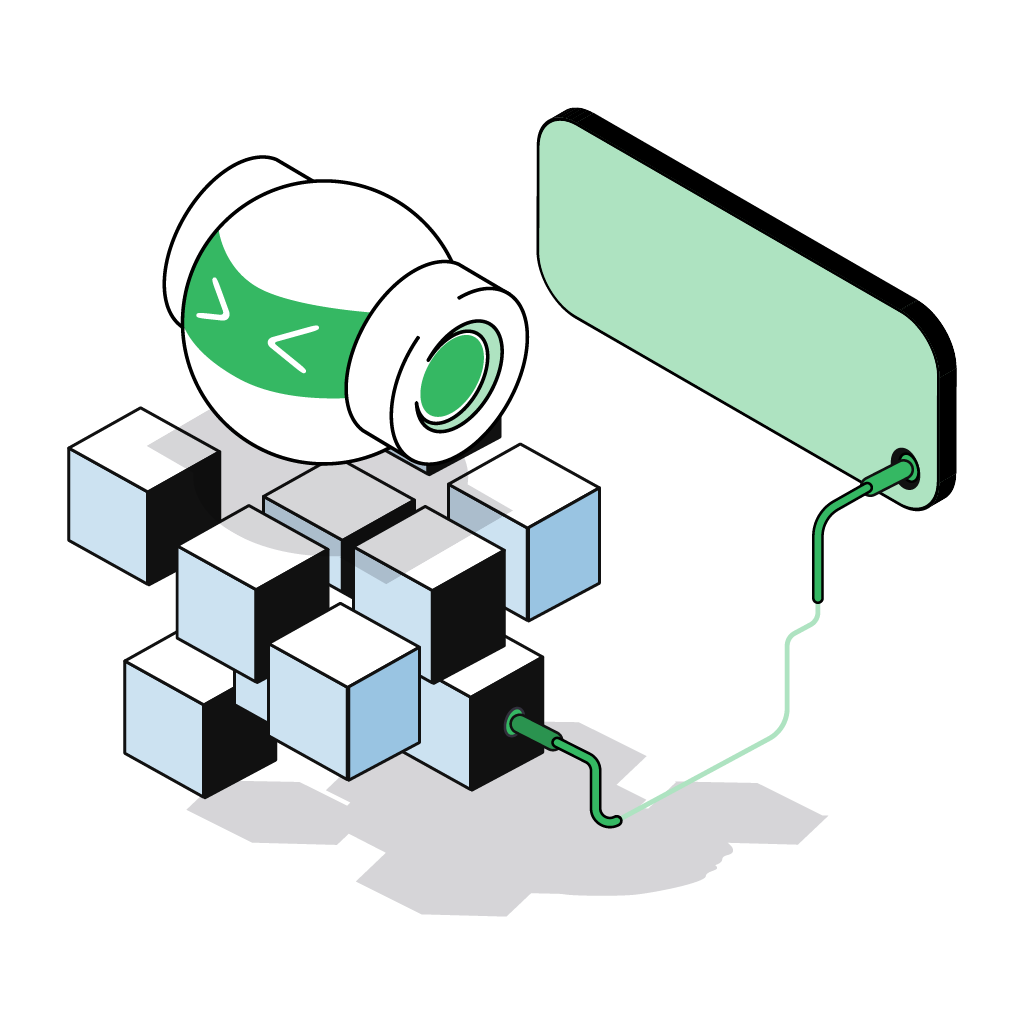As the volumes, complexity and use cases of enterprise data grows, organizations are increasingly turning to artificial intelligence (AI), machine learning (ML), and natural language processing (NLP) to automate and accelerate data transformation tasks.
From cleansing and enriching to mapping and classifying, these technologies promise faster insights and more intelligent automation. But as AI capabilities evolve, so do the risks — particularly around privacy, data security, and governance. For IT managers, senior data architects, and technology leaders, understanding these risks is crucial to deploying AI effectively and responsibly.
AI and NLP proliferation in data integration tools
Over the last few years, AI has rapidly become embedded across data integration platforms. Nearly every leading vendor has introduced AI copilots, intelligent mapping, or AI-assisted data prep into their toolsets. These features not only boost productivity but also aim to democratize data engineering by lowering the technical barrier for business users and analysts.
But there’s a critical distinction to be made: the difference between using AI as an assistant to the user, versus using AI to manipulate the actual data itself.
AI assistants vs AI for data transformation
AI as assistants for data integration design
Most modern tools include AI copilots that act as intelligent helpers during the integration design phase. These assistants use LLMs and generative models to:
- Convert natural language prompts into data pipelines (“turn words into actions”)
- Suggest field mappings based on metadata, patterns, and historical usage
- Provide documentation, error resolution, and workflow recommendations
Users can describe their data integration needs in plain English (or one of many languages supported by major LLMs). For example, you might request "merge customer data from our CRM with transaction records from the payment system," and the AI assistant generates the appropriate data flow configuration. This approach significantly reduces the technical barrier for business users while maintaining IT oversight.
From a privacy perspective, these AI assistants present relatively low risk since they typically operate on metadata and configuration parameters rather than actual data content. Most implementations require explicit user consent for sharing data when required, and maintain clear audit trails of all AI-generated suggestions.
AI for data transformation
The real challenges arise when AI is used to process the actual data — transforming, enriching, summarizing, or classifying content within operational data flows.
In this case:
- Sensitive data (like PII, financial records, or IP) may be sent to third-party AI APIs
- External services like OpenAI, Azure OpenAI, or Google’s Vertex AI may host the models
- Requests may be high-volume and cost-intensive, especially with LLMs used for record-level processing
This use case introduces significant privacy, security, and compliance risks that must be actively managed. Questions arise about data residency, third-party access, and compliance with regulations like GDPR or HIPAA. Organizations in highly regulated industries must carefully evaluate whether sending data to external AI services aligns with their compliance requirements.
AI in CloverDX
Discover how AI functionality in CloverDX helps you improve productivity, while protecting your data security.

Data privacy and governance risks in AI-powered data workflows
The integration of AI into data transformation workflows creates new governance challenges that IT managers must address proactively. Even more so, the actual quality of the data is at stake as well - unlike traditional ETL processes with deterministic, auditable logic, AI-driven transformations can appear as "black boxes" where the decision-making process isn't immediately transparent. This leads to a need for proper feedback loops, either involving a chain of AI calls or human intervention to verify the consistency and quality of data processed by AI.
Risks of using third-party LLMs for transforming live data
When third-party LLMs are used to transform live data:
- There’s risk of data leakage, misuse, or unauthorized retention by the external provider
- Regulatory violations (e.g., GDPR, HIPAA) can occur if data crosses borders or is inadequately masked
- Black-box AI logic can make audits and debugging difficult, jeopardizing governance
- Costs can spiral due to volume-based pricing of cloud AI services
- Users need to be trained to consciously operate systems that can potentially share and use data that’s not intended for public sharing
Specific risks come in areas such as:
Data residency and third-party access
When using cloud-based AI services for data transformation, your sensitive information may be transmitted to external providers. This raises concerns about data sovereignty, especially for organizations operating under strict regulatory frameworks. Financial institutions, healthcare providers, and government agencies often have policies prohibiting the external processing of sensitive data without explicit safeguards.
Algorithmic transparency
AI models making transformation decisions can lack the transparency required for regulatory compliance. If an AI system incorrectly classifies data or makes erroneous transformations, tracing the root cause and implementing corrections becomes more complex than with traditional rule-based systems.
Cost implications
While AI assistants typically generate low-volume API requests, using AI for actual data processing can quickly become expensive. Processing large datasets through third-party AI services may result in unpredictable costs that strain IT budgets, especially for organizations with high data volumes.
Solutions to AI privacy and security challenges
To strike the right balance between innovation and control, there are two key technical approaches:
1. Use locally hosted AI/ML models to ensure data privacy
Organizations can deploy pre-trained or fine-tuned models within their own infrastructure, ensuring that no data ever leaves the controlled environment. This approach allows for:
- Full data privacy and compliance (ideal for regulated industries)
- High performance (assuming suitable infrastructure)
- Zero per-record cost (beyond compute resource usage)
- Use of domain-specific or custom-trained models for tasks like PII detection or sentiment analysis, or any organization-specific task – e.g. custom model for insurance fraud and risk detection
While these models may be smaller and task-specific, they offer clear advantages in terms of control and cost.
Benefits of using local models for data transformation:
- Complete data sovereignty — no external data transfer
- Predictable costs based on infrastructure rather than usage
- Full control over model updates and configurations
- Ability to use proprietary or industry-specific models
 Fig A: Diagram showing 2 ways that AI transforms data in CloverDX
Fig A: Diagram showing 2 ways that AI transforms data in CloverDX
Considerations:
- Requires AI-ready infrastructure and specialized expertise
- Limited to smaller, task-specific models rather than large general-purpose systems
- Higher initial setup complexity
- Ongoing maintenance and model management responsibilities
2. Implement a trust layer for third-party AI to safeguard your data
For scenarios requiring cloud-based LLMs (e.g., GPT-4), enterprises can:
- Anonymize or mask data before sending it to the AI
- Add validation layers to inspect outgoing prompts
- Control what fields are exposed and log AI decisions
- Use enterprise-grade AI endpoints (like Azure OpenAI) that guarantee data is not stored or reused
Though more complex to set up, this approach offers a path to leverage cutting-edge AI safely and in compliance with policies.
Practical advice: Don’t over-automate
Not all transformation tasks require LLMs. Many can be handled with classic ETL logic or lightweight ML. For example:
- Standardizing dates? Use regex or locale-aware parsers.
- Matching names or deduplicating? Use a fuzzy matching library or small ML model.
- Summarizing reviews or translating text? That’s where LLMs might shine.
Careful architecture and use-case assessment are essential to avoid unnecessary exposure, latency, or cost.
CloverDX: A secure, flexible platform for AI-powered data transformation
CloverDX addresses the challenges of AI-powered data transformation through two complementary approaches designed to meet diverse organizational needs while maintaining security and compliance.
Self-hosted AI/ML transformations
CloverDX enables organizations to implement AI-powered data transformations while maintaining complete control over their data and infrastructure. The platform supports integration with locally hosted machine learning models, including PyTorch-derived implementations and custom-trained models.
- Deploy small or custom AI models locally
- Integrate your own pre-trained models or choose from CloverDX Marketplace offerings
- Ensure data never leaves your infrastructure
- Supports NLP tasks such as data classification, PII detection, and anonymization
- Specialized components for data classification and anonymization
This approach requires AI-ready infrastructure but ensures that sensitive data never leaves your controlled environment. For organizations in highly regulated industries or those with strict data sovereignty requirements, this represents the most secure path to AI-enhanced data transformation.
Data transformation using OpenAI integration
- Connect CloverDX components to OpenAI's API using your own key
- Dynamically generate prompts from data and receive AI-generated outputs (e.g., summaries, classifications, translations)
- Enable back-and-forth prompt chaining inside your own transformation logic
- Ideal for complex free-text enrichment tasks that require generative reasoning
With CloverDX, you can choose the right tool for each job — hosted AI for full control, or generative AI services when needed — all within a governed and auditable platform.
Choosing the right AI approach for your organizations data workflows
The decision between local AI deployment and trusted third-party services depends on several factors specific to your organization's needs and constraints.
Choose locally-hosted AI models when:
- Regulatory requirements prohibit external data processing
- Data sensitivity demands complete control
- Predictable costs are essential
- You have the infrastructure and expertise to manage AI models
Consider third-party AI services when:
- You need access to cutting-edge AI capabilities
- Infrastructure constraints limit local deployment
- Data sensitivity allows for external processing with appropriate safeguards
- Speed to market is a priority
Harnessing AI for data transformation without compromising privacy and security
AI and NLP are revolutionizing how enterprises approach data integration and transformation. But as capabilities grow, so do the responsibilities — particularly around data security, compliance, and cost control.
By combining privacy-first architecture (through local models or trust layers) with flexible tooling, organizations can safely harness AI’s full potential in their data pipelines. CloverDX stands out by enabling both approaches in one cohesive platform — helping IT leaders build powerful, secure, and future-ready data integration solutions.
Interested in using AI for data transformation while maintaining enterprise-grade governance? Learn more about how CloverDX supports local ML and OpenAI integrations — giving you full control over how and where your data is processed.
By CloverDX
CloverDX is a comprehensive data integration platform that enables organizations to build robust, engineering-led, ETL pipelines, automate data workflows, and manage enterprise data operations.








